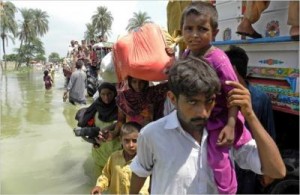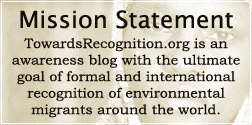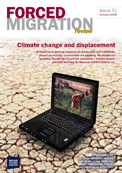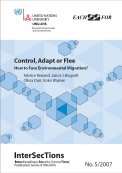This is a great blog post I found on The Hill’s Congress Blog. It is by Alice Thomas, Climate Displacement Programme Manager for Refugees International, and encapsulates the Pakistan crisis with a climate change and migration viewpoint.
(The Hill’s Congress Blog) August 18, 2010 – The devastating floods in Pakistan have claimed the lives of at least 1,500 people and rendered millions more homeless and displaced. According to the United Nations, the deluge’s human toll, which has reportedly affected 14 million Pakistanis, is worse than the 2004 tsunami, the January earthquake in Haiti, and the 2005 earthquake in Pakistan combined. The record-breaking floods – along with other recent unprecedented climate-related catastrophes such as the heat wave in Russia and torrential rains and subsequent mudslides in China – are in line with the predictions of climate scientists that global warming will cause an increase in the frequency and intensity of extreme weather events.
According to climate vulnerability indices, Pakistan is one of the world’s most at-risk countries due not only to its exposure to climate-related hazards such as flooding and droughts, but also its human vulnerability in terms of the capacity of individuals, communities, and societies to effectively respond to such hazards based on a combination of natural, human, social, financial and physical factors.
Yet getting the public and policy makers to see the Pakistan floods and other recent disasters not only as a portent of things to come but also as an indication that climate change is already occurring is likely to prove challenging. This is due in part to the inability of scientists to prove that
any one storm, drought or flood was caused
by global warming, as opposed to a variety of other factors that affect weather. Thus, while meteorological data show that the number of extreme weather events has tripled since the 1980s, and that 2010 is on track to be the warmest since reliable records began in the mid-19th century, there is a hesitancy to discuss the recent catastrophes in the broader context of the implications of climate change.
What is clear is that the United States will be making a mistake of tremendous proportions if it waits for scientific certainty with respect to climate change before developing a coherent response. Rather, the important message we must take from these catastrophes is that climate change will likely place increasing pressure on a humanitarian system that is already stressed and woefully underfunded. Moreover, the United States is not investing nearly enough to help at-risk and vulnerable countries prepare for future natural hazards that are likely to increase with frequency and intensity in years to come.
For example, in 2009, less than ten percent USAID’s Office of Foreign Disaster Assistance (OFDA) budget, or approximately $86.7 million, was devoted to disaster risk reduction activities worldwide. The UN is now estimating that at least $460 million – more than 5 times that amount – is needed to respond to the immediate humanitarian crisis in Pakistan alone. Ramping up the amount of money we spend to help vulnerable populations prepare for disasters before they strike will result in substantial savings over the long term – both financial and in terms of loss of human life.
At the same time, we need to be investing more to help fragile populations adapt to climate change by building their resiliency to its anticipated adverse effects and promoting livelihoods that can endure those impacts. While the President’s request for nearly $334 million for international climate adaptation in the Fiscal Year 2011 budget is a step in the right direction, it falls far short of what is needed.
Helping the most fragile and vulnerable states, like Pakistan, prepare for the anticipated impacts of climate change also represents an important contribution to increased political stability. In Pakistan, militant offensives in the northwest region have displaced more than a million Pakistanis within their own borders, in addition to approximately two million Afghans who are seeking refuge there. The flooding, which has affected many of these same areas, has displaced millions more.
Helping to build the resiliency of Pakistanis to climate change impacts including flooding, droughts and water scarcity would go a long way towards decreasing political instability in the region, and more importantly, minimizing human suffering and loss of life.
Source: The Hill’s Congress Blog




